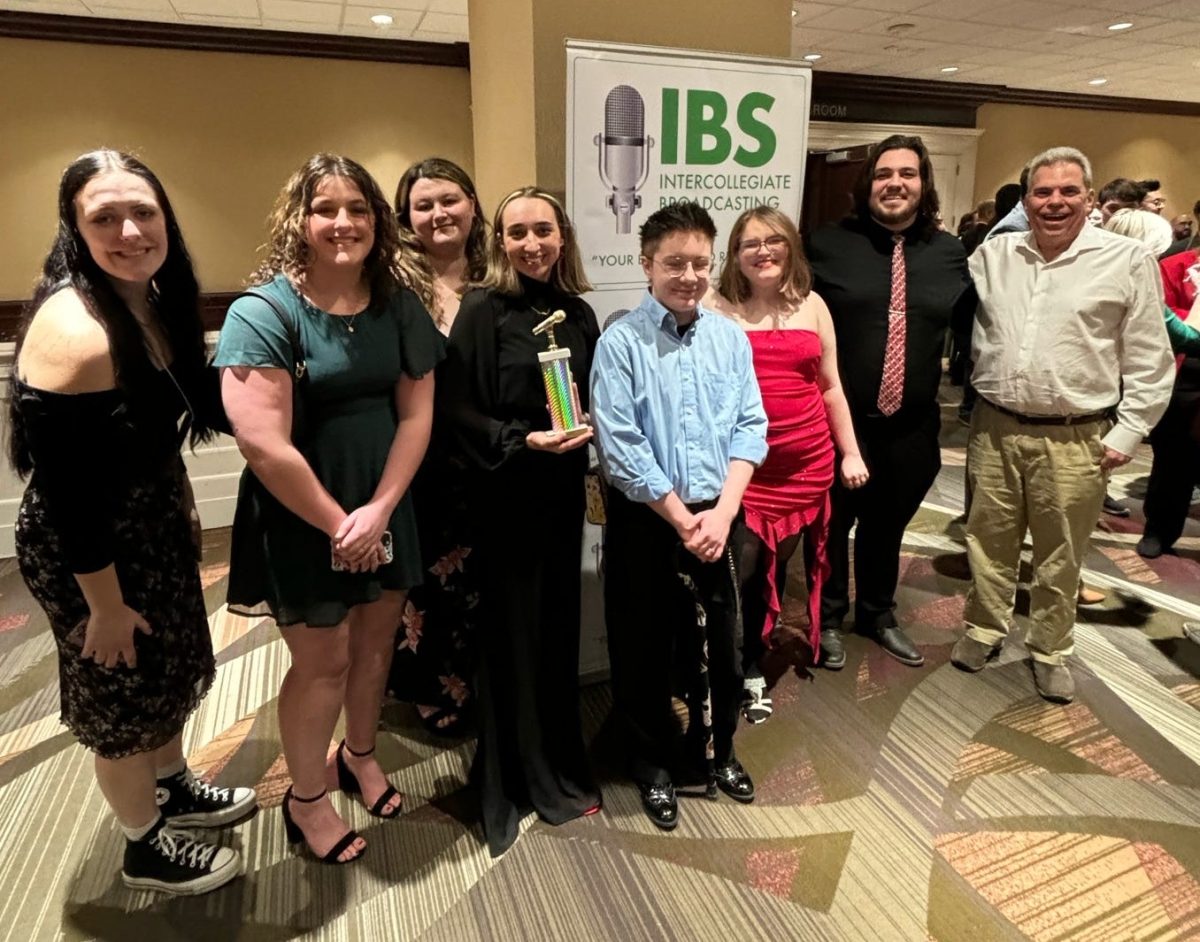The philosophy and theology department at Gannon University held a lecture Monday that raised concerns about the environmental threats to the Great Lakes.
Kelly Grant, Ph.D., an assistant professor of biology, led the lecture titled, “St. Albert the Great,” after Albertus Magnus, one of the first natural scientists and also an expert in biology, chemistry, physics, astronomy, geography, metaphysics and mathematics.
Although the lecture was based on environmental concerns, the philosophy and theology department spearheaded the lecture because of the concern they hold for all reality.
Aaron Kerr, Ph.D., chairperson of the philosophy program and theology department and an assistant professor of the philosophy program, said the philosophy and theology department want to integrate their knowledge with the students.
“As philosophers and theologians, we want to pursue the truth and integrate all our knowledge into every reality,” Kerr said. “By holding lectures like these, we hope to help the students integrate their knowledge as well.”
The lecture began with the discussion of seven stressors on the environment. Some of the stressors include climate change, nutrient loading, toxic pollution and invasive species.
Grant first focused on climate change and said humans do have an impact on these changes. Air temperature and water temperature will rise and this will ultimately cause more storms with the intensity and frequency of storms changing as well, Grant said.
Another major environmental issue brought up by Grant was nutrient loading.
“Nutrient loading might sound good, because you hear nutrient,” Grant said. “But too many nutrients can cause problems.”
Erie is a city with large amounts of agriculture and the chance of nutrient loading in Lake Erie is high. The Erie watershed, which is the water runoff into the surrounding rivers and creeks leading to larger bodies of water, are becoming contaminated with nutrients from sewage and is bringing the large amounts of nutrients to Lake Erie.
One of the issues related to nutrient loading was seen in Toledo, Ohio, in the summer of 2014, when a section of Lake Erie was taken over by blue-green algae. Toledo had to ban its drinking water for two days because it was unsafe to consume, Grant said.
Grant said the algae grew because of the phosphorus runoff from fertilizer and animal waste. With Erie being a large agricultural city and being so close to one of the shallowest Great Lakes, there is a chance Erie could face similar problems as Toledo, Grant said.
“Some algae can create toxins in the water making the water undrinkable,” Grant said. “That is something we take for granted – clean drinking water.”
Toxic pollution is also a large contributor to environmental concern, Grant said. She said there are five major contaminants that could affect the Great Lakes. Some of those contaminants include biomagnifying toxic metals, polychlorinated biophenyls (PCBs) and atrazine.
Grant said the biomagnifying toxic metals do not leave the inside of the bodies after consumption. She said if fish consume this toxin, it will not leave their bodies and if humans consume the fish, they too are consuming the toxin. It not only affects the organisms within the polluted ecosystem, it can affect humans as well.
Atrazine is also a common contaminant that is concerning to environmentalists, Grant said. It is a chemical used on corn crops and when introduced to the runoff into the watershed it could cause reproductive and hormonal problems.
Another main focus of Grant’s lecture was the emerging contaminants and the lack of information that the regulatory agencies have regarding the amount of harm they could have on the environment. Grant said personal care products are one of these emerging contaminants along with pharmaceuticals and caffeine.
“Products that contain fragrances, microbeeds or triclosan are harmful to the environment,” Grant said. “We may not have considered these harmful because they don’t break down in the environment, but that is why they are so threatening.”
Many schools, organizations, business or houses use triclosan on a daily basis. It is one of the ingredients found in hand sanitizer. Microbeeds are also used on a regular basis by several people, and are being found in the Great Lakes, Grant said.
Grant said pharmaceuticals might not seem very dangerous because they are ingested, but the drug is not entirely metabolized by the consumer causing it to be flushed out into sewage.
If cities or towns do not have proper sewage disposal, the un-metabolized pharmaceutical can be consumed by the species in the lakes and may cause behavioral changes, Grant said.
Grant said that banning these types of chemicals isn’t the answer, but regulating them could be.
“As a biologist I would love to just ban the chemical,” Grant said. “But sometimes that chemical is needed for other things and banning them just wouldn’t be possible. If there were more regulations on the chemicals that are harmful to the environment, then maybe there wouldn’t be so many concerning issues.
Gannon can help the cause by making sure soaps don’t have triclosan in it, pushing to go green and trying to monitor the chemicals it uses.”
Laura Goble, administrator for the Gannon Goes Green Committee, said that there is more Gannon could be doing to help the environment.
“Gannon isn’t doing enough,” Goble said. “It is still offering drinks in the Styrofoam cups, Gannon is trying to keep the cost down, but aren’t looking at the larger cost. Our committee wants to do more but can’t be the same voices talking.”
Yohanna Romero, a sophomore early childhood education major, said she wants Gannon to do more.
“With all the environmental issues, I feel like Gannon should be contributing more,” Romero said. “Especially with us being right next to Lake Erie, we should be doing more to preserve it.”
BECKY HILKER










